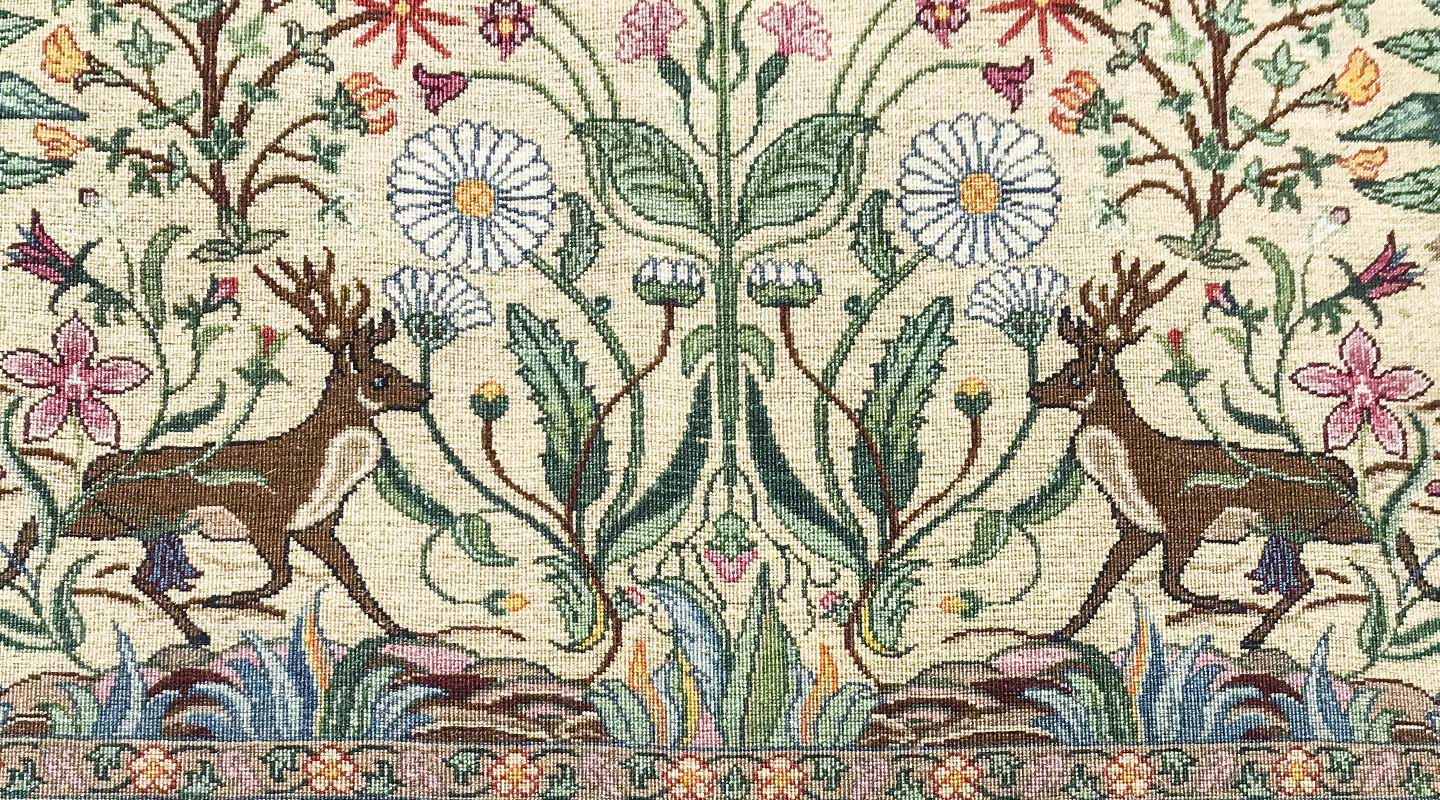A carpet with seven kinds of flowers as well as the Swedish landscape, a tribute to animals and nature, to water and the forest, to life and all those worlds found in fairy tales. This is the theme of the Iranian carpet on display at the Textile Museum this summer. It’s about a meeting between artist and craftsperson, about encounters through knowledge and traditions, and about the magic between the people in the project.
The idea for the carpet Seven Kinds of Flowers came to artist Shabnam Faraee after reading an article in the magazine Hemslöjd about the carpet weaver Morteza Golestani. Morteza was born in Afghanistan and, since 2015, has been living outside Östersund in Jämtland. The family fled the war in Afghanistan to Pakistan, where Morteza trained as a carpet weaver at the age of 10. After two years as an apprentice, he was able to start contributing to the family’s livelihood. He has been an undocumented migrant in Iran and a refugee all his life. In the places he has lived, he has also woven carpets. Now he wanted to weave a Swedish motif, and Shabnam wanted to design it for him.
The creation of the carpet has been a long process with working sessions in Kurdistan, Tehran, Stockholm and Jämtland. Shabnam is a pattern designer, but had no experience in designing patterns for an Iranian carpet. With the help of useful contacts in Iran, she began her journey towards the pattern that years later became the carpet Morteza has woven. Her pattern was redrawn into a weaving map, allowing the weaver to read the pattern and know where to knot. The more detailed the pattern, the more knots per seven centimetres.
Shabnam was not interested in designing a traditional Iranian carpet pattern. It would be a pattern, as Morteza wanted, of the Swedish landscape, with its lush greenery, lakes and archipelago. The pattern also draws inspiration from the forest, flowers and animals. Water avens, bluebells, daisies, wood cow-wheats, woodland clover, red clover and chervil — seven kinds of flower, inspired by the Midsummer tradition. The flowers, together with blackbirds, deer and birch trees, are framed, according to Iranian tradition, as a monument around the fragile stylised flowers. To capture the feel of the classic expression, Shabnam spent every day gazing at one of the Iranian carpets she has at home. The patterned shapes and movements settled in her body, so it became a natural process when she drew the flowers in the dancing and curved shapes. A lot of time was spent on the colour scheme to make it as detailed as possible.
The wool yarn is dyed with various plants, walnut shells, indigo and minerals by a master in the Kurdish city of Sanandaj. The yarn is hand-spun by Kurdish women and the wool is from sheep in the Kurdish mountains. The carpet measures 200 x 140 cm and consists of a total of 20 colours and one million knots. Eight individuals have played significant and essential roles in the carpet's completion. They have contributed their expertise, experience, contacts and knowledge — knowledge that has been handed down for many hundreds of years.

